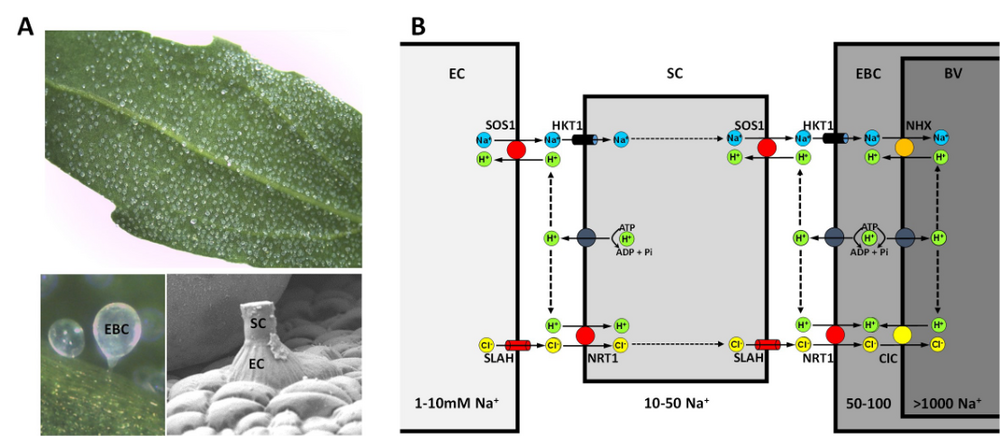Salt Bladders: Do they matter?
Salt Bladders: Do they matter?
Salinity is a major environmental hurdle affecting crop production around the world. Salt tolerant crops are urgently needed to overcome this trend and make better use of saline soils. Halophytes (naturally salt-loving plants) use specialized structures to sequester excessive salt outside their metabolically active parts. Chenopodium quinoa, a pseudo-cereal halophyte species from the Amaranthaceae family belongs to halophytes that are considered to be the most salt tolerant terrestrial plant species on the planet. To a large extent, quinoa’s superior ability to grow and produce yield on highly saline soils is achieved by its ability to sequester excessive salt in the specialized, unique hair like (trichome) external structures called salt epidermal bladder cells (EBCs). This feature is not utilized by crops, however, and no information is available about the molecular mechanisms by which salt is pumped into bladder cells. In our project we will determine how Quinoa deals with and, even benefits from, salinity. The key transport systems mediating salt sequestration in Quinoa salt bladders will be characterized and linked with cell genetic and metabolic profiles. This knowledge will allow breeders to utilize this trait to improve crop performance under salinity.









